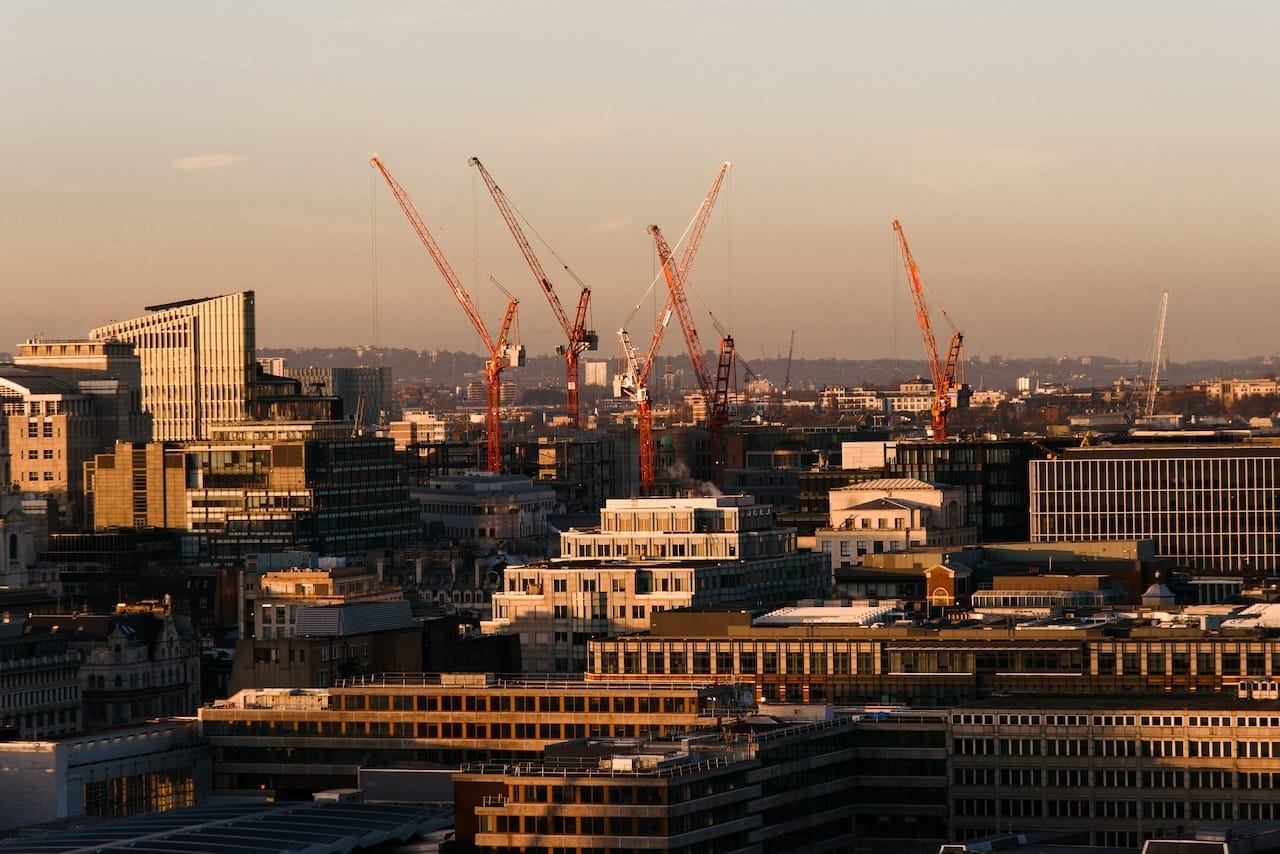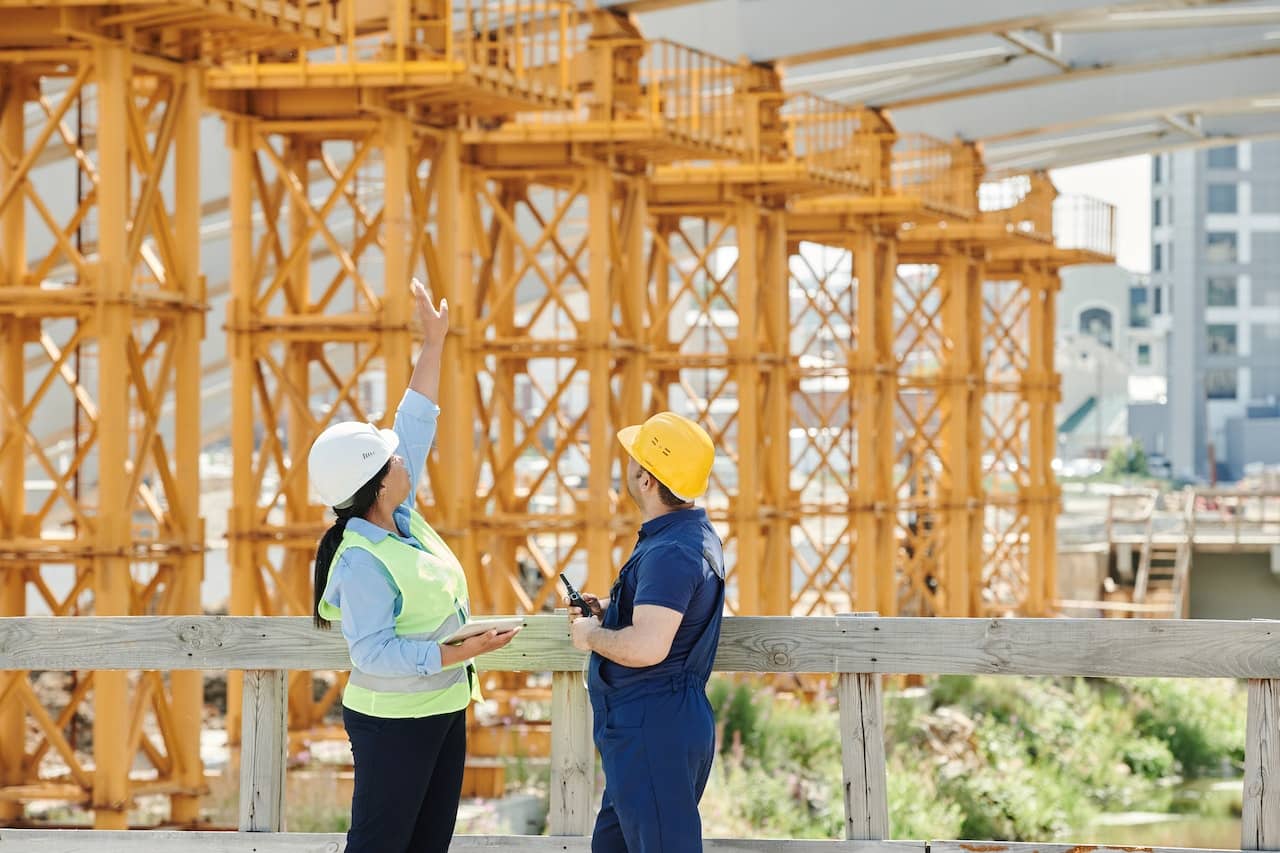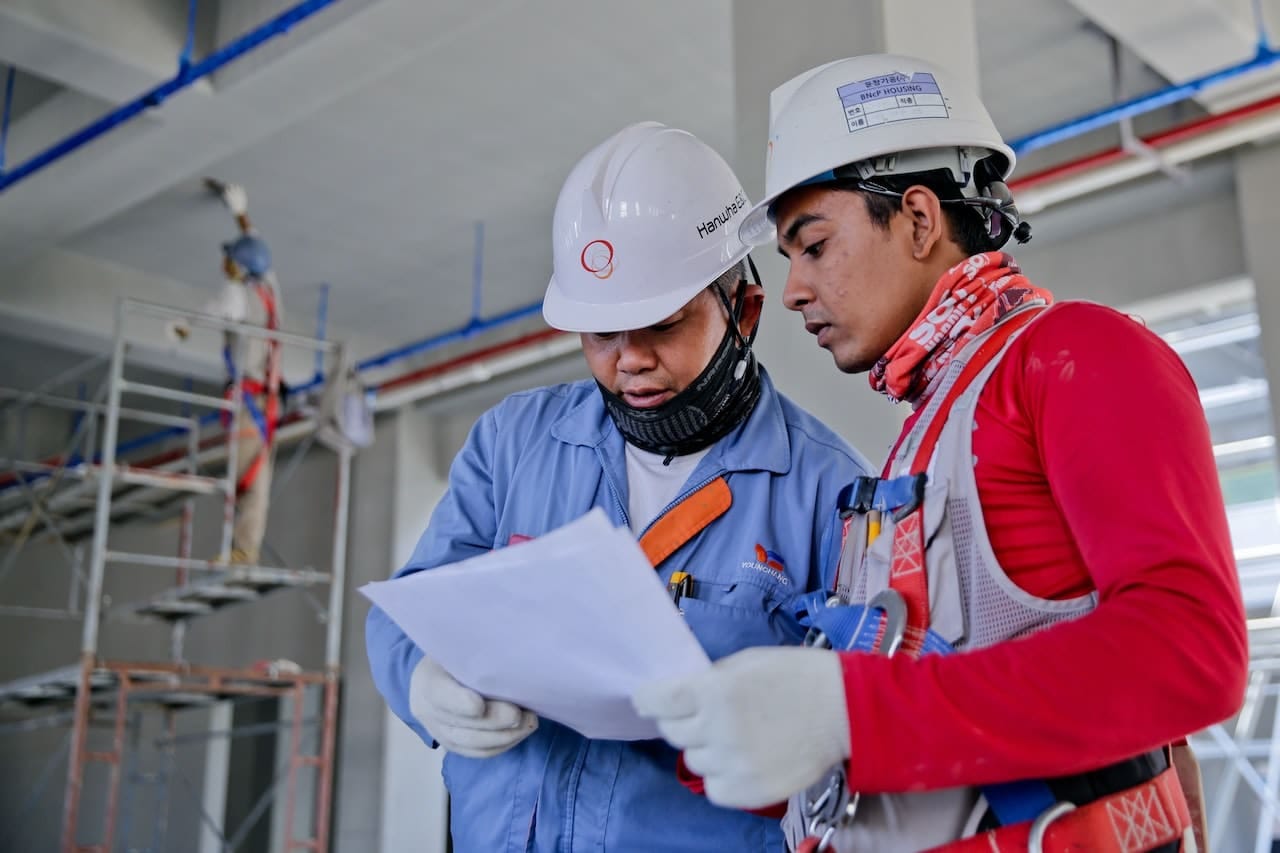Our PESTLE Analysis of The Construction Industry highlights how different external and internal factors impact the construction industry.
Do you enjoy looking at beautifully constructed buildings and houses? If yes, then it means you are interested in the construction industry.
However, have you ever wondered how different external and internal factors shape the construction industry? If not, then this article is a must-read for you.
In today's article, we will conduct a PESTLE Analysis of The Construction Industry to highlight how different external and internal factors impact the construction industry. Before conducting the PEST analysis, we need to rewind a bit and look at the history of the construction industry.
Construction isn't associated with modern cranes and excavators. The construction industry was present way before any of these machines were made. However, at that time, there were other ways to do construction.

The history of the construction industry can be divided into three parts. The first part covers the construction of ancient monuments, such as the Egyptian Pyramids.
The second part covers the construction that took place in the middle ages, and the last part consists of the developments in the construction industry after the industrial revolution.
The Egyptians, Greeks, and Romans laid the foundations of the construction industry. More than 3,800 years ago, Egyptians constructed Pyramids that are considered among the world's wonders.
At that time, people used sand, stone, and clay to construct the Pyramids. However, the time went by, innovations in the construction techniques were observed. Better raw materials were being used in the middle ages for construction that strengthened the structure.
The Gothic architecture is an example of the construction that took place in the middle ages. By comparing Pyramids with cathedrals present in Europe, we can see how the construction industry evolved over the years.
The main difference between the construction done in the ancient era and the middle ages is that in the middle ages, people had access to better tools and techniques compared to the ancient era.
After the middle ages, the industrial revolution took place in the 18th and 19th centuries. The industrial revolution changed everything. It changed the construction industry for good.
Modern equipment and machines now became a part of the construction industry. This increased work efficiency by saving raw materials and cutting construction time.
Moreover, research and innovation used new raw materials, such as steel and reinforced concrete, which helped construct bridges, roads, and buildings.
Currently, the construction industry is one of the most growing industries. The increase in population is causing the demand for construction to go up.
In 2021, the construction industry was worth $7.3 billion. Moreover, the construction industry is predicted to grow further in the coming years.
Now that we have recapped the history of the construction industry let's see what PESTLE analysis is. PESTLE analysis is a tool that businesses use to examine what external factors impact a certain business or an industry.
The name PESTLE means that this analysis highlights various political, social, technological, economic, legal, and environmental factors that businesses or industries face.
Now that we have briefly discussed PESTLE analysis let's proceed and conduct the PESTLE analysis of the construction industry.

Political Factors Affecting The Construction Industry
Political factors in a PESTLE analysis are the factors that are affected by a country's political scenario and government policies. This section discusses how various political factors affect the construction industry.
The construction industry has a prominent role in any economy. Hence, governments make policies to direct the construction industry. Governments make policies regarding safety laws, zoning laws, and construction laws.
Such government policies impact the construction industry directly. For example, strict government policies will repel the constructors. As a result, the construction will hinder.
Moreover, frequent changes in government policies will create a lack of trust in the construction industry, and construction will slow down.
Besides government policies, political stability is another factor that impacts the construction industry.
Construction slows down in a politically unstable country because the construction industry doesn't know whether the current government will continue. This scares them because the change in government means a change in government policies.
Besides that, a relaxed and friendly political environment internationally suits the construction industry because it attracts foreign direct investments, often resulting in construction projects.
On the contrary, if the political environment is internationally hostile, it would dampen the FDIs and cause the construction industry to slow down. Besides that, FDI also brings the latest construction equipment and techniques that can benefit the industry.

Economic Factors Affecting The Construction Industry
Economic factors are also significant external factors that impact the operations of any business or industry. This section of the PESTLE analysis will highlight the economic factors that affect the construction industry.
Economic growth is one of the key economic factors directly related to construction. For example, suppose a country is experiencing good economic growth. In that case, the construction industry in that country will also flourish.
You might be thinking, how are these two related? High economic growth refers to a higher income per capita, meaning people have a higher purchasing power.
When people have more disposable income, they invest in the construction industry, and the demand for houses, buildings, and other infrastructure increases.
Moreover, a country with high economic growth also spends on developing infrastructure like schools and roads. This also increases the demand for construction. Hence, the construction industry flourishes.
Besides that, interest rate impacts the construction industry significantly. Interest rates refer to the cost of borrowing a loan. Therefore, more construction occurs in a country where interest rates are generally low.
The reason for this is simple. Lower interest rates encourage people to take loans, invest in the construction industry, or purchase residential and commercial property. By doing so, the demand in the construction industry increases.
Other than that, inflation is also a critical factor that affects the construction industry. This is because higher inflation means a higher level of commodity prices. Hence, higher inflation lowers the disposable income in the pockets of consumers.
As a result, they have less money to buy a house or an apartment. This means the demand for construction decreases. Hence, the construction industry suffers.

Social Factors That Affect The Construction Industry
Social factors are the factors that are related to the society and its demographics. This section will take a closer look at how different social factors affect the construction industry.
Population is one of the factors that impact the demand for construction.
A country witnessing a rise in population will witness an increase in construction because as the population increases, people will require more houses, schools, buildings, and other infrastructure to function. As a result, the demand for construction increases whenever the population increases.
Other than population, urbanization is another factor that has a positive relationship with construction. As a country experience urbanization, the construction industry becomes active since infrastructure needs to be built for urbanization.
Moreover, societal norms and values also affect the construction industry. For example, families in countries like India, Pakistan, and Bangladesh live in a joint-family system. In Pakistan, on average, almost eight people live together in a household.
This means countries with more people living in a single house will experience less construction demand than countries with fewer people living together.

Technological Factors That Affect The Construction Industry
Technology impacts any industry significantly. This section will discuss some of the technological factors affecting the construction industry.
Modern-day construction requires a lot of machines and automation. Hence, modern machines and tools can help the construction industry prosper.
At the time of the industrial revolution, Britain was the only region where construction was thriving because it had the latest equipment and machines.
Similarly, machines can be used for bricklaying, concrete pouring, and other activities. Using machines in these activities will automate the construction industry and promote efficient construction.
Besides that, using drones for ariel supervision can help the construction industry significantly in site inspections. In addition, using such techniques will prevent unnecessary use of resources.
Other than that, the usage of software has created a positive impact on the construction industry. For example, designing software has enabled civil engineers and designers to design buildings, houses, roads, etc., on software and then execute it practically.
This has reduced the designing and planning time. Moreover, the use of software has limited the wastage of resources. Overall, technology has improved the quality of construction and reduced the wastage of resources.

Legal Factors That Affect The Construction Industry
Every industry must abide by the laws in the country where they function, or they may have to pay heavy penalties. In this section, we will analyze the impact of legal factors on the construction industry.
Several laws affect the construction industry. One such law is the labor law. The construction industry has to abide by all the laws associated with labor—for example, minimum wage law, safety law, anti-discrimination law, etc.
Labors have strong unions, and violating any such law can negatively affect the construction industry's reputation. Besides that, construction companies that violate these laws may have to pay heavy fines.
Other than labor laws, firms in the construction industry also have to keep laws related to construction in mind. For example, suppose a height limit is mentioned for buildings near an airport. In that case, firms must follow these instructions, or they might have to demolish the entire building.
Furthermore, contracts prepared in the construction industry should follow government instructions. Any irregularity in the contracts may result in serious charges such as fraud.
Data protection laws also impact the construction industry significantly since construction firms possess clients' data. Therefore, any breach or leakage of a client's data may result in heavy fines.
Other than that, it would also cause mistrust among the clients regarding the construction industry. Therefore, this could have an adverse impact on the construction industry.

Environmental Factors Affecting The Construction Industry
This is the last section of this PESTLE analysis. This section analyses the environmental factors that impact the construction industry.
Construction harms the environment in many ways. The material required for construction, such as stone and limestone, is extracted through mining. This damages natural resources such as mountains.
Furthermore, there are a lot of machines used in the process of construction. All these machines require fossil fuel to function. As a result, carbon emissions occur, and the air quality is compromised.
Looking at all the damage construction causes to the environment, pressure groups can get active and demand a penalty on construction firms. Hence, construction firms have to take care of the environment.
Other than the pressure groups, climate change can disrupt the operations of the construction industry. In addition, climate change has increased the frequency of natural disasters.
In case of heavy rainfalls and storms, construction may get disrupted. As a result, the construction industry will suffer.
Besides that, natural disasters cause road blockages. This can disturb the supply of raw materials needed for construction. Hence, this would damage the construction industry.
Moreover, there are where the water table is dropping faster.
For example, Pakistan is predicted to face water scarcity in the coming years. In such countries, the construction industry can suffer in the future since a lot of water is required in the construction process.

PESTLE Analysis of The Construction Industry: Final Word
The construction industry is a billion-dollar industry that employs millions of people. Today's article discussed how the construction industry evolved from ancient to modern times.
We discussed different types of construction that we have seen over the years. For example, Egyptian Pyramids and European cathedrals. We then discussed how the construction techniques and the raw materials used for construction evolved.
After that, we conducted a PESTLE analysis of the construction industry to see how different external factors impact the construction industry.
The PESTLE analysis framework highlighted various political, social, economic, environmental, technological, and legal factors that impact the operations of the construction industry.
We hope that you would have enjoyed reading this article. If you want to read more similar articles, look at some PESTLE analysis examples.


